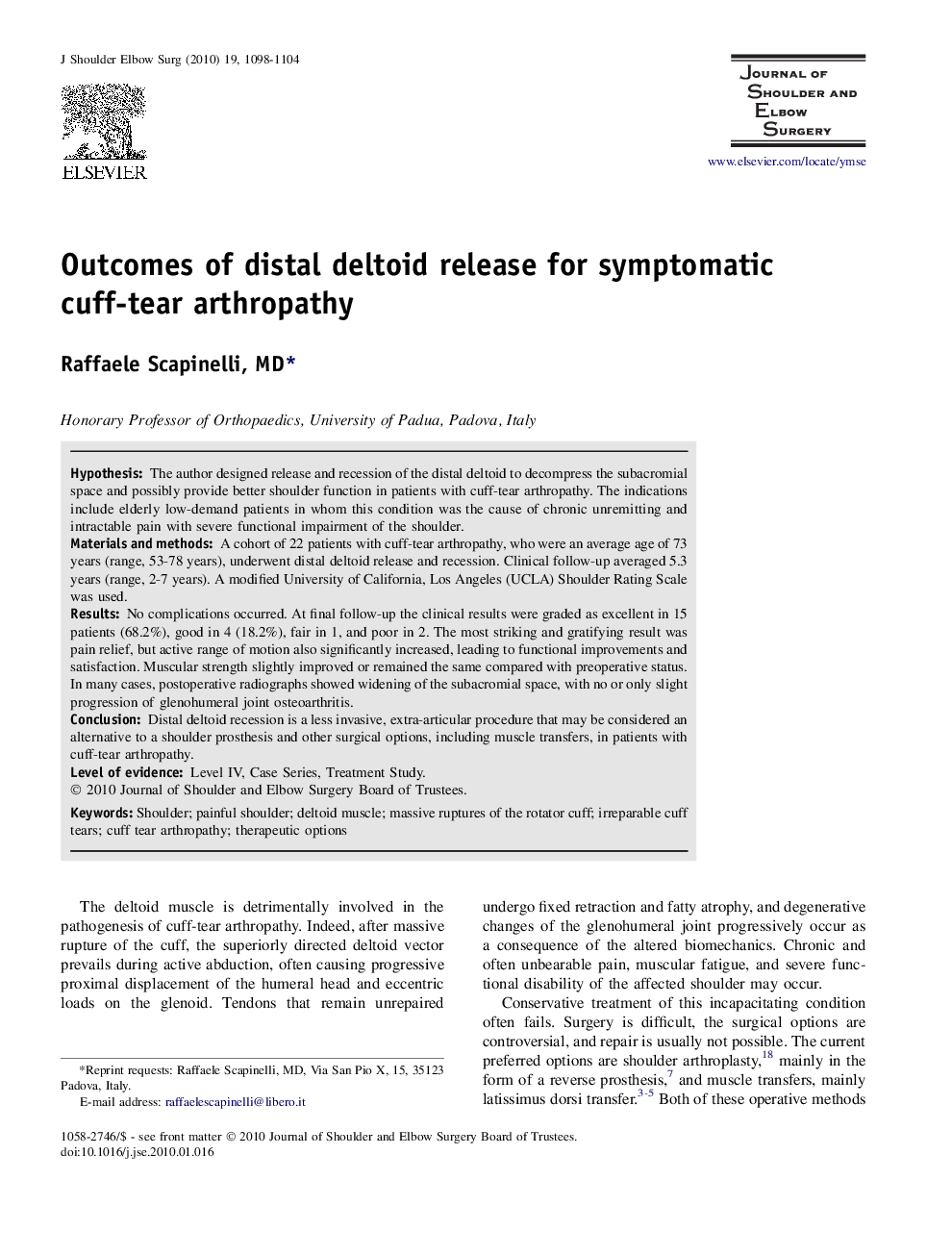| Article ID | Journal | Published Year | Pages | File Type |
|---|---|---|---|---|
| 4074669 | Journal of Shoulder and Elbow Surgery | 2010 | 7 Pages |
HypothesisThe author designed release and recession of the distal deltoid to decompress the subacromial space and possibly provide better shoulder function in patients with cuff-tear arthropathy. The indications include elderly low-demand patients in whom this condition was the cause of chronic unremitting and intractable pain with severe functional impairment of the shoulder.Materials and methodsA cohort of 22 patients with cuff-tear arthropathy, who were an average age of 73 years (range, 53-78 years), underwent distal deltoid release and recession. Clinical follow-up averaged 5.3 years (range, 2-7 years). A modified University of California, Los Angeles (UCLA) Shoulder Rating Scale was used.ResultsNo complications occurred. At final follow-up the clinical results were graded as excellent in 15 patients (68.2%), good in 4 (18.2%), fair in 1, and poor in 2. The most striking and gratifying result was pain relief, but active range of motion also significantly increased, leading to functional improvements and satisfaction. Muscular strength slightly improved or remained the same compared with preoperative status. In many cases, postoperative radiographs showed widening of the subacromial space, with no or only slight progression of glenohumeral joint osteoarthritis.ConclusionDistal deltoid recession is a less invasive, extra-articular procedure that may be considered an alternative to a shoulder prosthesis and other surgical options, including muscle transfers, in patients with cuff-tear arthropathy.
